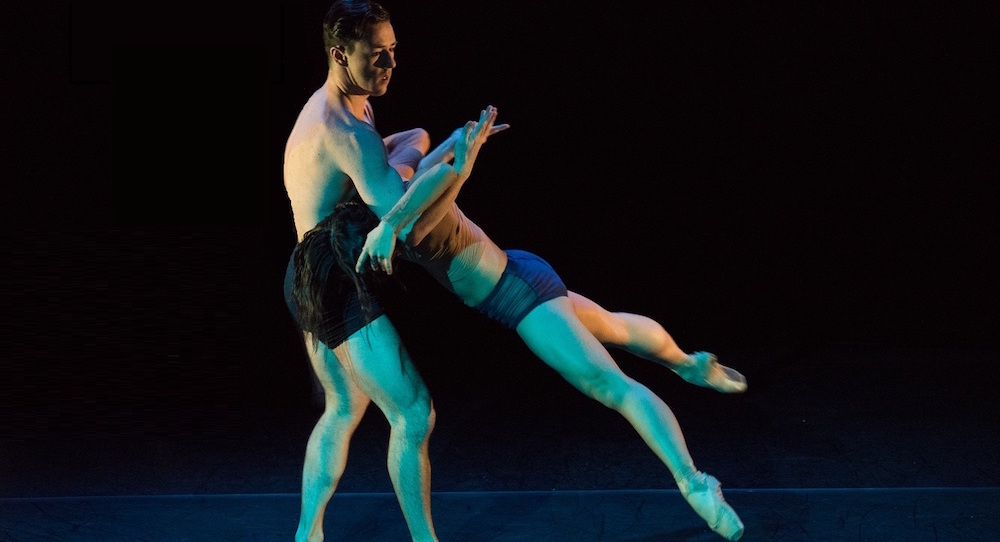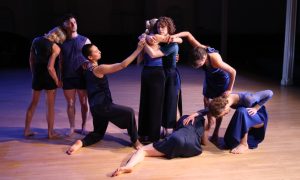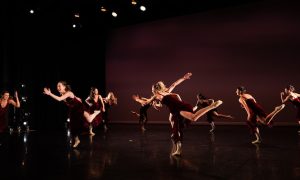The Sheen Center, New York, NY.
November 17, 2017.
It can be so easy to stay in one’s comfort zone. It can also be easy to follow a trend, to stay moving with the pack. It’s much harder to dare to do what you haven’t done before, or to forge your own path away from the crowd’s. This can be especially true with the arts and artists, a space where innate subjectivity can bring creators to fear how their work will be received if they go in new directions – different from something which has previously been well received, which they or others have created.
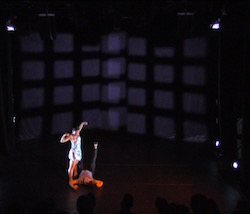 When brave artists can buck this fear, or somehow never experience it, what they produce can be innovative, meaningful and socially valuable. Sheena Annalise, founder, director and choreographer of New York City-based Arch Contemporary Ballet, has recently taken such steps with Between the Lines, recently performed as a world premiere. It was right away evident that the work was quite different in style and tone than what Annalise typically creates.
When brave artists can buck this fear, or somehow never experience it, what they produce can be innovative, meaningful and socially valuable. Sheena Annalise, founder, director and choreographer of New York City-based Arch Contemporary Ballet, has recently taken such steps with Between the Lines, recently performed as a world premiere. It was right away evident that the work was quite different in style and tone than what Annalise typically creates.
At the risk of reducing due nuance and complexity, her work is often on the somber side, or with a compelling modern styling. This reviewer has experienced much of her work and can’t remember anything that’s just simply fun. Between the Lines opened with such an air. The music was jazzy, quick and energetic. The two dancers, and Aoi Ohno and Dylan Vonder Linden, entered with pure panache. Joy and energy oozed out of all their pores.
Jive and jitterbug movement vocabulary, such as quick low kicks and ball changes, with jazz hands fully alive, salt-and-peppered more classical movement. Ohno offered smoothly endless extensions and powerful turns. Vonder Linden exhibited enticing power, particularly in leaps and rock-solid partnering. Through this, they exuded a second- or third-date coyness, that beginning-to-blossom part of a romantic relationship when it’s clear something’s starting but not fully clear exactly what that is.
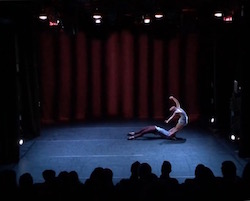 On the other hand, much of the movement and atmosphere it created was not overtly romantic – or didn’t have to be. Something deeper spoke to the connection present between two human beings breathing, moving and living together in space. This was especially true in the second song, with drumbeats echoing through the theater. Movement became more earthy, grounded, and raw. Flat backs and deep plies brought the duo into lower space.
On the other hand, much of the movement and atmosphere it created was not overtly romantic – or didn’t have to be. Something deeper spoke to the connection present between two human beings breathing, moving and living together in space. This was especially true in the second song, with drumbeats echoing through the theater. Movement became more earthy, grounded, and raw. Flat backs and deep plies brought the duo into lower space.
They moved closer to center upstage. There was a “beat” poet feel to it, as if they were “cool cats” performing slam poetry in a San Francisco jazz cafe. Lighting by Designer Alexandra Christie effectively highlighted them in their place, also dimming to contribute to this jazz cafe-atmosphere. In observing the work in that romantic lens, this is the stage when couples find things that they can enjoy doing together. Perhaps some of the heated romantic passion has faded, and – on the best days together – things feel calm and fun.
One gorgeous lift in particular depicted this sense – Ohno with a high extension à la seconde, facing upstage but looking back at the audience, and her partner smoothly lifting her high. Moments like these were wonderful to experience. Yet, in contrast to other sections, the amalgamation of classical ballet movement and that of other idioms is something to smooth out in this section. It was the difference between silky baking batter and that with just a bit of lumpiness to be stirred out.
Annalise has shown great commitment to improving upon works and showing them in more refined forms. I am confident that she’ll do so here. Another thing to acknowledge here is Annalise’s announcement that she completely re-worked large chunks of this premiere work in the days before it was performed – quite brave indeed. Considering that, so much within the work was well-crafted by Annalise, and well-performed by the dancers.
 They seemed impressively comfortable with the movement and their characters (or archetypes, a valid way one could interpret what they danced). Perhaps this section to be further massaged-out was where the last-minute shifts were most apparent. Select few people are aware of what the work was like before Annalise made these changes. The changes were most likely quite worth it to make, considering the risk and (likely) stress involved. Kudos to Annalise and the dancers for making the leap.
They seemed impressively comfortable with the movement and their characters (or archetypes, a valid way one could interpret what they danced). Perhaps this section to be further massaged-out was where the last-minute shifts were most apparent. Select few people are aware of what the work was like before Annalise made these changes. The changes were most likely quite worth it to make, considering the risk and (likely) stress involved. Kudos to Annalise and the dancers for making the leap.
After that slight stylistic shift into this section came another, even more divergent one. The music became more sweeping and dramatic, and movement more technique-based, expressive, and expansive. If keeping with that idea of a romantic relationship, this was those times of reckoning – the passion even more so faded, learning difficult things about the other, and trying keep the relationship strong despite that. There were even moments of slightly uneasy spacial relations akin to pillow talk – lying fully stretched on the ground, rolling away from and toward each other.
If in that idea of the simple connection between two people, the power that they both exuded was captivating – together and apart. On the latter, they each had powerful solos. The dramatic music perfectly matched their expansive movement quality and vocabulary. A sweeping barrel turn came from Vonder Linden, and smooth yet strong turns and extension from Ohno. Ultimately, they ended the section in an embrace. Lights came down on them here. Although perhaps moreso romantic, the simple connection between them as people was clear.
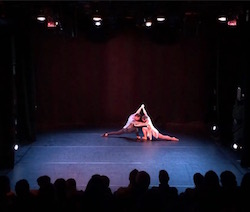 To end the work, we were back at the beginning – the same snappy, jazzy song and jive movement. It spoke to how particularly in romantic relationships, but in all relationships, there are cycles. Things can come full circle. Overall, the work was a portrait – no, a portfolio of many individual portraits – of a romantic relationship. Yet there was a universality also speaking to the connections between all people.
To end the work, we were back at the beginning – the same snappy, jazzy song and jive movement. It spoke to how particularly in romantic relationships, but in all relationships, there are cycles. Things can come full circle. Overall, the work was a portrait – no, a portfolio of many individual portraits – of a romantic relationship. Yet there was a universality also speaking to the connections between all people.
All factors considered, this achievement seemed possible because Annalise bucked the trends of both herself and others. Isadora dared to kick away her pointe shoes. Van Gogh dared to place strokes of paint on paper as no one had before. They both dared to continue doing those things in new ways, not just painting or dancing how they always had. This is how art, and therein (arguably) the world, moves forward. Many thanks and congratulations to artists such as Annalise and her company who propel such progress.
By Kathryn Boland of Dance Informa.
Photos courtesy of Arch Contemporary Ballet.


